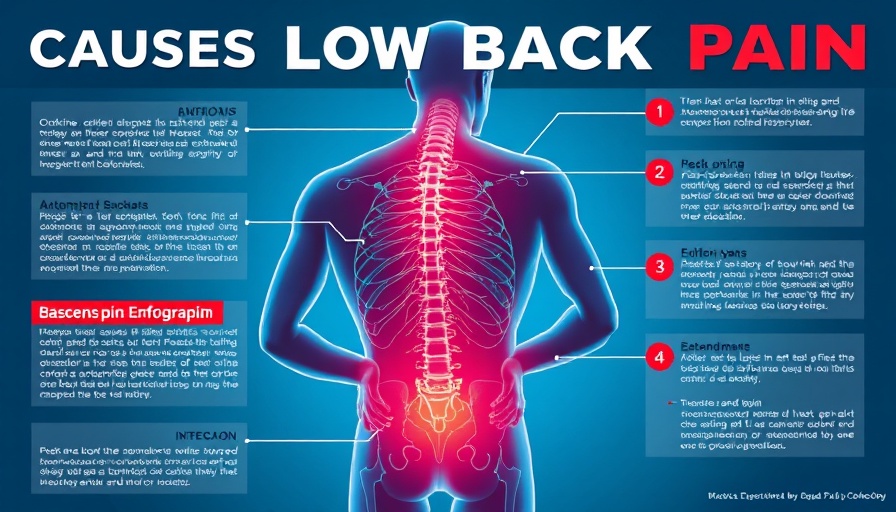
Understanding Low Back Pain: Key Insights and What to Watch For
Low back pain is an ailment that touches the majority of us at some point in our lives, with studies indicating that up to four out of five people experience it. As someone dealing with this persistent discomfort, it may seem like a frustrating journey filled with doctor visits and unclear diagnoses. The question of when back pain crosses the threshold from a common annoyance into a serious medical concern is one worth exploring.
In Low Back Pain Causes (and 7 Worrying Signs), we delve into the perplexing world of back pain, providing insight into when you should be concerned.
The Anatomy of Low Back Pain
The structure of our lower back is a complex interplay of bones, muscles, nerves, and other tissues that work together to enable our mobility. The vertebrae form the spinal column, with spinal discs that act as shock absorbers between these bones. Ideally, our bodies should allow us to move freely, but any misstep or injury can lead to debilitating pain. Understanding this complexity can help us better appreciate why certain symptoms warrant serious attention.
Seven Signs That Indicate Serious Underlying Issues
In the video Low Back Pain Causes (and 7 Worrying Signs), several markers that may indicate a serious medical issue surrounding back pain were identified. We’ve summarized these signs to facilitate an informed approach to your health:
- Duration of Pain: If low back pain persists beyond six weeks, there may be more than just a muscular strain at play. Extended discomfort merits further investigation.
- Progressive Escalation of Pain: Unlike typical muscular pain that may fluctuate, pain from underlying pathological conditions tends to steadily worsen over time.
- Accompanying Fever or Night Sweats: Symptoms such as fever or night sweats, especially in contexts of recent infections or drug use, could suggest serious underlying issues, including infection.
- Age Factor: New back pain in individuals over 50 should never be ignored. The risk for conditions like fractures or cancer rises noticeably with age, particularly after menopause.
- Unexplained Weight Loss: Sudden weight loss can be tied to various cancers, and should prompt immediate medical attention if accompanied by back pain.
- Severe Spine Stiffness: Stiffness may signal an autoimmune condition called ankylosing spondylitis, which requires timely diagnosis to mitigate long-term effects.
- Evidence of Nerve Injury: Observable nerve-related symptoms, such as sensation changes or weakness in legs, indicate potential spinal cord compression or nerve damage.
While these signs may be worrying, it's essential to approach them without panic—most instances of low back pain are benign. Nonetheless, awareness can empower individuals to be proactive about their health.
Chronic Back Pain: The Complexity Unveiled
If your back pain has persisted beyond 6 to 12 weeks without finding a pathological condition, you might be experiencing what is known as chronic back pain. This condition is notoriously frustrating, and recognizing that the pain may have morphed beyond its initial cause to alter the body’s pain signaling system is essential for your management plan.
The Role of a Healthy Lifestyle in Prevention
Modern living tends to favor a sedentary lifestyle, leading to decreased flexibility and muscle strength—two crucial factors when it comes to sustaining a healthy back. Incorporating regular exercise, ergonomic workstations, and mindful movement can help mitigate the risk of back pain.
Moreover, education on the intricacies of our anatomy and pain perception can not only help individuals recognize symptoms but also reduce anxiety about potential ailments. We’ve all heard about the benefits of yoga for flexibility, but how often do we implement it into our lives? A well-structured routine can work wonders in maintaining spinal health.
Take Action for your Health!
It’s crucial to listen to your body and seek medical advice if you encounter any of the red flags discussed here. Communicating openly with healthcare providers, especially regarding any concerning symptoms you experience, will ensure that you receive the best care. By advocating for your health, you can lead a more active and pain-free life.
If you would like to explore more about chronic back pain and its management, don’t hesitate to ask in the comments below. Remember, taking informed action is the best way to harness your health.
In conclusion, awareness of the signs and symptoms of low back pain can empower you as a patient. While some instances are commonplace and manageable, understanding when to seek further care is invaluable in safeguarding your well-being.
 Add Row
Add Row  Add
Add 




Write A Comment